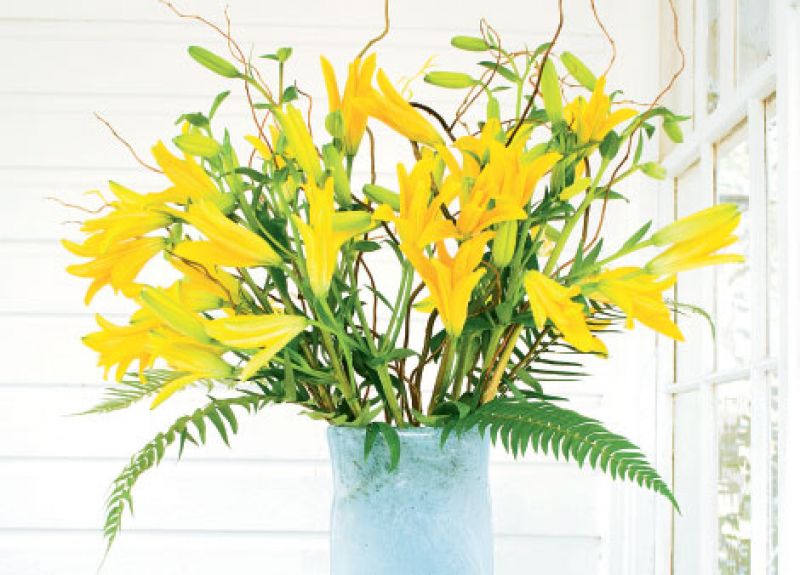
Historically Speaking
Originally from Asia, daylilies worked their way into Western Europe in the 15O0s when explorers returned home with the showy plants. As colonists settled North America, they brought the tuberous perennials with them, and by the 1700s, the most popular varieties (in shades of tawny orange and lemon yellow) were ubiquitous in East Coast gardens, cemeteries, and homesteads. Those early strains quickly multiplied, spread far and wide, and became near weeds along the Atlantic seaboard. In the 1900s, Midwestern botanist Dr. Arlow Stout, whose childhood fascination with a homegrown lily lead to his life’s work, catalogued tens of thousands of plants and bred some 100 cultivars of his own. Considered the “father” of the modern hybridized daylily, he’d be proud to know there are nearly 60,000 cultivars today.
Growing Tips
In part, daylilies’ popularity stems from their rigorous, relatively low-maintenance role among perennials.
• Plant them in the spring (March to early May, before temps hit 90 degrees) or late fall (October and November). Aim for full-sun, or for places where plants will receive at least six hours of direct sun each day. Space them approximately 18 to 24 inches apart in moist, well-drained soil, and divide as plants mature over time.
• Water around the roots lightly every day (especially in the spring and summer); watering leaves and blooms will cause mildew. Expect blooms from spring to the fall’s first frost.
Arranging Ideas
Daylily blooms tend to open in the morning and wither by night (hence their name). While this isn’t ideal for long-lasting arrangements, they do make a showstopping bouquet for say, a springtime brunch. • Harvest blooms as early in the day as possible, and immediately place in a vase filled with cool tap water.
•“Refrigerate if you wish to use them for a nighttime function,” says Bob Roycroft of Roycroft Daylily Nursery in Georgetown. “You can place individual flowers in the refrigerator and then bring them out at night. The refrigeration delays the opening and maturation of the flower.”
• To dress up the arrangement, line the interior of the vase with tropical leaves (like those from banana plants).